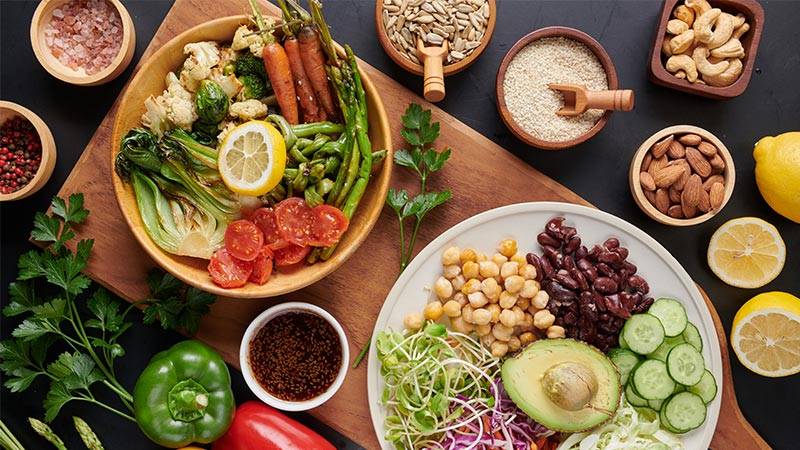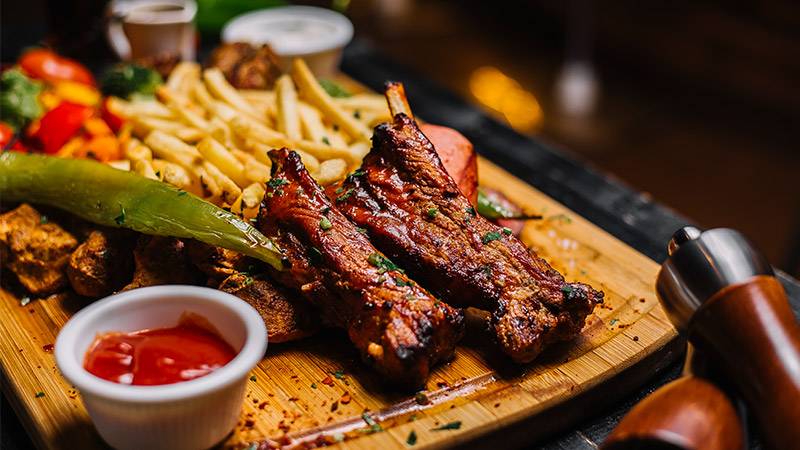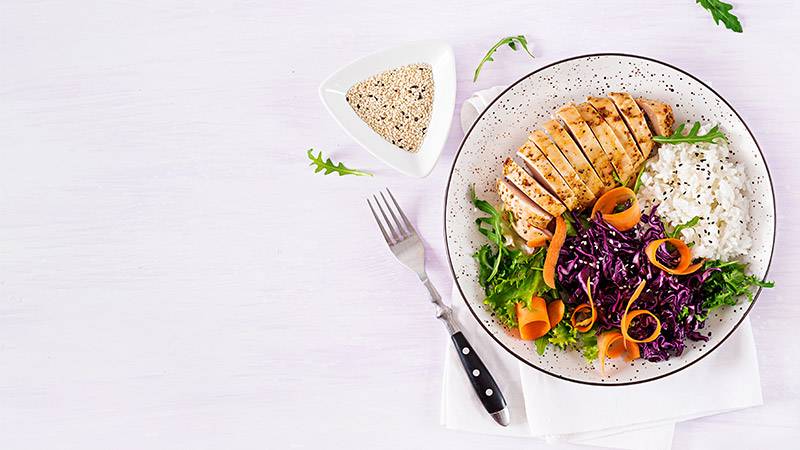In today’s world, many of us are seeking ways to harmonize our dining choices with the well-being of the planet. Enter the flexitarian diet—a dietary approach that’s not just a passing trend, but a commitment to healthier living and environmental responsibility.
This middle ground between vegetarianism and omnivorous diets offers a flexible way to enjoy a vast array of foods, while consciously reducing our meat intake.
As someone who’s delved deep into sustainable eating, I’ve seen firsthand the benefits of going flexitarian. Join me as we explore the ins and outs of this eco-friendly diet and discover its potential for a healthier you and a greener Earth.
What is the Flexitarian Diet?

The flexitarian diet, as its clever name suggests, is a fusion of the words “flexible” and “vegetarian.” In essence, it embodies the spirit of both terms, aiming to blend the health and environmental benefits of vegetarianism with the adaptability to occasionally indulge in meat-based dishes.
Unlike a strict vegetarian or vegan diet, a flexitarian approach doesn’t completely rule out meat but rather emphasizes plant-based foods as the mainstay of one’s dietary choices.
This sustainable diet was championed by dietitian Dawn Jackson Blatner, who recognized the barriers many faced when contemplating a full transition to vegetarianism.
Blatner’s vision was to create a dietary plan that allowed individuals to reap the health benefits of increased plant-based food intake, without feeling the constraints or guilt associated with completely eliminating meat.
The foundational principles of the flexitarian diet are:
- Prioritizing plant-derived foods such as legumes, grains, and vegetables.
- Reducing, but not entirely excluding, meat consumption.
- Focusing on whole foods and steering clear of heavily processed options.
Its overarching goal? To offer a sustainable eating pathway that not only supports individual health and weight management but also champions the well-being of our planet. In essence, the flexitarian diet is a conscientious commitment to balancing personal health with environmental responsibility.
The Environmental Benefits of the Flexitarian Diet
Carbon Footprint Reduction
It’s no secret that our dietary choices directly influence our carbon footprint. Livestock farming, especially beef production, is a significant contributor to greenhouse gas emissions.
By embracing a flexitarian diet and focusing on reduced meat consumption, we can substantially lower our individual carbon footprints. Every meat-free meal we choose translates to fewer emissions in the atmosphere. Consequently, even small shifts towards plant-based foods can collectively lead to a noticeable reduction in our environmental impact.
Conservation of Water Resources
Water is one of our most precious resources, and producing animal-based foods, especially meat, demands a staggering amount of it. To put it into perspective, producing a single kilogram of beef can consume thousands of liters of water, from the livestock’s drinking needs to irrigating the crops they feed on.
On the flip side, plant-based foods generally require less water to produce. By leaning more towards a diet rich in grains, legumes, and vegetables, we can play a pivotal role in water conservation and ensure a more sustainable future for our planet.

Reduced Land Use and Deforestation
One of the often overlooked consequences of a meat-centric diet is the pressure it puts on our land resources. Large swathes of forests, particularly rainforests, are cleared to make way for livestock grazing or to grow feed for animals.
This deforestation not only displaces countless wildlife species but also hampers the Earth’s ability to naturally sequester carbon. By gravitating towards a flexitarian approach, we can reduce the demand for such expansive land use. Over time, this dietary shift can help curb deforestation and preserve the vital biodiversity that our ecosystems rely upon.

Read More:
Health Benefits of the Flexitarian Diet
Reduced Risk of Chronic Diseases
Embracing the principles of the flexitarian diet isn’t just an environmentally responsible decision; it’s a boon for our health too. Multiple studies have linked reduced meat consumption to decreased risks of chronic diseases.
For instance, those who prioritize plant-based foods over frequent meat intake have demonstrated a lower propensity for heart disease, type 2 diabetes, and certain types of cancers.
It’s believed that the rich array of antioxidants, phytonutrients, and lower saturated fat content in plant foods plays a pivotal role in these health benefits.

Improved Digestive Health
Let’s talk about a topic dear to many: digestion. A flexitarian diet, abundant in whole grains, legumes, and vegetables, invariably means a higher fiber intake. And as we know, fiber is the unsung hero for our digestive systems. Consuming ample fiber helps promote regular bowel movements, prevents constipation, and has even been associated with a reduced risk of colorectal cancer.
Moreover, the diverse fiber from plant-based foods acts as fuel for our gut bacteria, fostering a healthy and balanced gut microbiome, essential for overall well-being.
Weight Management
One of the striking benefits of a flexitarian approach is its potential for weight management. Foods central to this diet—like vegetables, fruits, and whole grains—are typically lower in calories yet high in nutrients and satiety-promoting fiber. This means you’re likely to feel full and nourished on fewer calories.
By reducing meat consumption and focusing on these whole foods, many find it easier to maintain a healthy weight and even shed those extra pounds. It’s a sustainable eating path that champions both personal health and weight control without resorting to drastic or restrictive measures.

Downsides of a Flexitarian Diet
The flexitarian diet, celebrated for its flexibility and environmental advantages, does present some challenges that individuals should be aware of:
Nutrient Concerns
A reduced intake of meat may lead to potential deficiencies in key nutrients. Iron, vitamin B12, omega-3 fatty acids, and certain amino acids are more abundant in animal products. Without proper planning, flexitarians might miss out on these essentials, which could impact their overall health.
Vague Guidelines
The flexitarian approach is inherently flexible, which can be both its strength and weakness. This lack of strict rules might lead to inconsistencies in dietary choices. For some, the ambiguity can be confusing or result in imbalanced meals.
Over-reliance on Processed Foods
With the growing popularity of plant-based diets, there’s been an influx of processed vegetarian and vegan foods in the market. While they might fit the flexitarian criteria, these often contain additives, high salt levels, and unhealthy fats, detracting from the diet’s health benefits.
Sociocultural Challenges
In many cultures, meat is central to traditional meals. Flexitarians might face difficulties in social gatherings or feel pressured to conform. There’s also the potential for misunderstandings or misconceptions from peers who are unfamiliar with the flexitarian approach.
Cost Implications
Depending on one’s location, high-quality plant-based proteins or organic produce can be pricier than conventional or meat-based alternatives.
Foods to Eat on a Flexitarian Diet
Venturing into the flexitarian realm means expanding your palate to a colorful array of whole foods and minimally processed options. The beauty of this diet lies in its flexibility and the sheer variety it offers.
As someone who’s embraced sustainable eating, I can’t stress enough the importance of prioritizing nutrient-dense choices. Here are just some of the wide array of foods that can form the cornerstone of a flexitarian diet:
- Grains: Quinoa, brown rice, oats, barley, whole grain pasta
- Legumes: Lentils, chickpeas, black beans, kidney beans, tofu and tempeh
- Vegetables: Broccoli, spinach, carrots, bell peppers, cauliflower
- Fruits: Apples, bananas, berries (blueberries, strawberries, etc.), oranges, kiwi

Now the flexitarian diet is all about reducing, but not necessarily eliminating, animal products. Here’s a list of animal products that can be occasionally consumed on a flexitarian diet:
- Poultry: Chicken, turkey, duck
- Fish & Seafood: Salmon, tuna, shrimp, mackerel, sardines, cod, trout
- Red Meat (consumed less frequently): Beef, pork, lamb, veal
- Dairy: Milk (cow, goat, sheep), cheese (cheddar, feta, mozzarella, etc.), yogurt, butter
- Eggs: Chicken eggs, duck eggs, quail eggs
- Other Animal-Based Products: Honey, gelatin (though many flexitarians opt for plant-based alternatives)
It’s essential to remember that while these products can be included, the overarching principle of the flexitarian diet is to prioritize plant-based foods. When opting for animal products, consider choosing sustainably-sourced, organic, or pasture-raised options whenever possible.

Read More:
Foods to Minimize on a Flexitarian Diet
On the journey to a more sustainable and health-conscious diet, certain foods are best consumed in moderation. While the flexitarian diet is about flexibility, mindful choices can enhance its benefits. Here are foods and food groups that I recommend limiting:
Red Meat: Especially beef and lamb, due to their higher greenhouse gas emissions and potential health concerns when consumed in excess.
Processed Meats: Such as bacon, sausages, and deli meats, which often contain preservatives, high sodium, and have been linked to various health risks.
Highly Processed Foods: Including many ready-made meals, chips, and certain snack bars, which might be rich in additives, sugars, and unhealthy fats.
Sugary Beverages: Soft drinks, many fruit juices, and sugary teas can add unnecessary calories and provide little nutritional value.
Excessive Dairy: While dairy can be part of a flexitarian diet, it’s wise to be conscious of its environmental footprint and potential impact on health, especially when consumed in large amounts.

Tips for Trying a Flexitarian Diet
Embarking on a flexitarian journey is exciting, but I know it can also feel a tad overwhelming. From my experience and research on sustainable eating, here’s a step-by-step guide to ease you into this eco-friendly lifestyle:
Start Slowly
Don’t feel pressured to change overnight. Begin by designating one or two days a week as meatless days. As you get accustomed, increase the frequency.
Educate Yourself
Read about the environmental and health impacts of various foods. This knowledge will empower your choices and motivate you to stay on track.
Plan Ahead
Just like any diet, success often lies in preparation. Stock your pantry with plant-based staples like lentils, beans, whole grains, and nuts. Having these at hand will make it easier to whip up flexitarian-friendly meals.
Explore New Recipes
Dive into the world of plant-based cooking. From hearty lentil stews to tofu stir-fries, there’s a treasure trove of delicious recipes waiting to be discovered.
Mind Your Nutrients
While reducing meat, ensure you’re getting essential nutrients like iron, protein, and vitamin B12 from other sources. Foods like quinoa, fortified plant milks, and spinach are great additions.
Seek Out Sustainable Brands
If you do opt for processed plant-based products, research brands that prioritize sustainable practices and use minimal additives.
Listen to Your Body
Everyone’s needs are unique. Pay attention to how your body reacts, and adjust your diet accordingly. If needed, consider consulting a nutritionist to ensure you’re meeting all your dietary requirements.
Stay Connected
Join flexitarian or sustainable eating communities online. Sharing experiences, asking questions, and celebrating milestones with like-minded individuals can be incredibly motivating.
Educate, Don’t Preach
Share your journey with friends and family, but remember, everyone’s path is different. Encourage others through your actions and experiences rather than pushing them to change.
Celebrate Small Wins
Every meal where you prioritize sustainability and health is a victory. Take a moment to appreciate your efforts and the positive impact you’re making on the planet.
Flexitarian Meal Plan for 1 Week

Welcome to a week of delicious, sustainable eating! This 7-day flexitarian meal plan offers a mix of plant-based dishes interspersed with moderate animal-based options. Here’s a journey to nourish both you and the planet:
Day 1
Breakfast: Overnight oats with almond milk, chia seeds, fresh berries, and a drizzle of honey.
Lunch: Spinach and chickpea salad with cherry tomatoes, cucumber, feta cheese, and a lemon-tahini dressing.
Dinner: Vegetable stir-fry with tofu, bell peppers, broccoli, and a soy-ginger sauce, served over brown rice.
Day 2
Breakfast: Avocado toast on whole grain bread, topped with poached eggs and a sprinkle of chili flakes.
Lunch: Quinoa salad with roasted vegetables, pumpkin seeds, and a balsamic vinaigrette.
Dinner: Grilled salmon with a side of asparagus and quinoa.
Day 3
Breakfast: Smoothie bowl with banana, spinach, flaxseeds, almond milk, topped with granola and coconut flakes.
Lunch: Lentil soup with carrots, celery, onions, and a touch of cumin.
Dinner: Spaghetti with a rich tomato sauce, fresh basil, and a sprinkle of parmesan cheese.
Day 4
Breakfast: Whole grain pancakes with a side of mixed fruit salad.
Lunch: Hummus and veggie wrap using a whole grain tortilla, with a side of carrot sticks.
Dinner: Chicken curry with mixed vegetables, paired with brown basmati rice.
Day 5
Breakfast: Granola, Greek yogurt, and a mix of berries.
Lunch: Vegan chili with black beans, corn, tomatoes, and bell peppers.
Dinner: Eggplant parmesan with a side of mixed greens.
Day 6
Breakfast: Scrambled eggs with spinach, tomatoes, and feta cheese.
Lunch: Cauliflower and chickpea curry with a side of naan bread.
Dinner: Zucchini noodles (zoodles) with a walnut and basil pesto.
Day 7
Breakfast: Chia seed pudding with almond milk, topped with kiwi and mango slices.
Lunch: Grilled portobello mushrooms with a quinoa stuffing.
Dinner: Shrimp stir-fry with snap peas, carrots, and cashews, flavored with lemon and garlic.
Conclusion
The flexitarian diet offers a balanced approach to sustainable eating, intertwining both health and environmental benefits. By embracing this diet, we not only nourish our bodies but also tread lightly on our planet.
While every dietary choice is deeply personal, the flexitarian path serves as a gentle reminder that even small changes can create a ripple effect, fostering a healthier ecosystem for us all.
If you’re inspired by this journey of flexible vegetarianism, I urge you to give it a try. Start today, experiment with the recipes, and share your experiences. Together, let’s make a conscious choice for a brighter, greener future.


